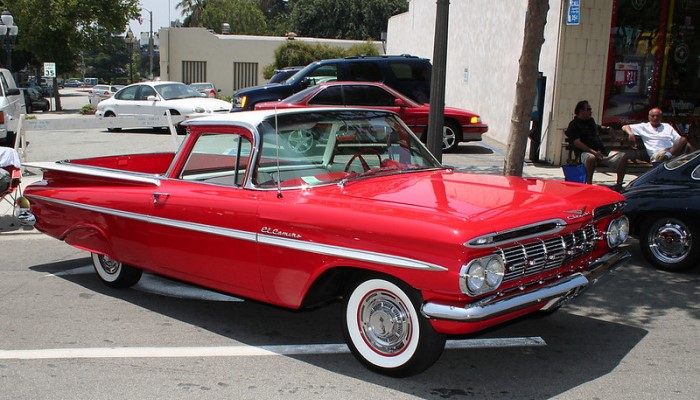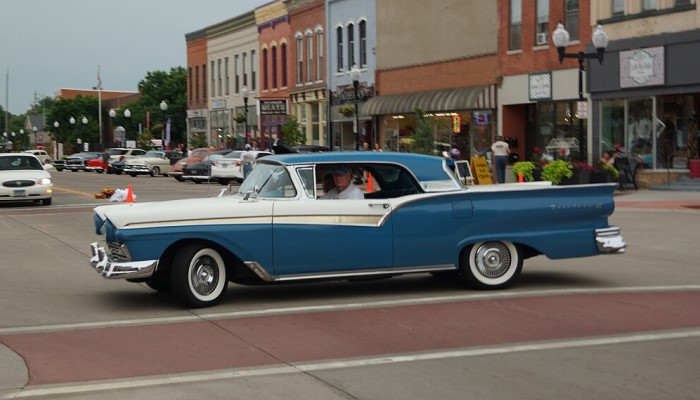1957-1959 Ford Ranchero
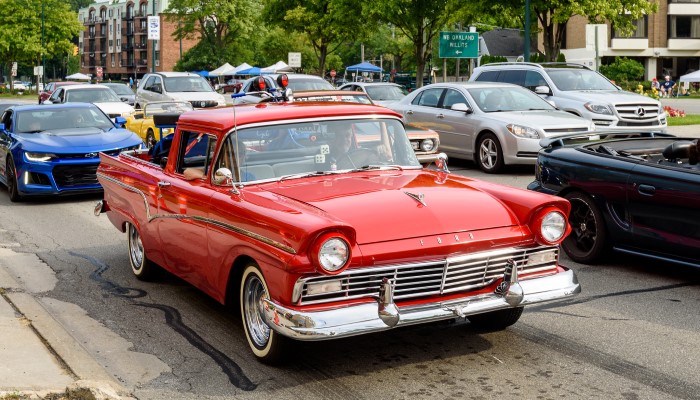
Photo: 1957 Ford Ranchero" by Mustang Joe
A Stylish Blend of Car and Truck
Although Ford has never been a company that takes big risks, the situation changed greatly during the 1950s when the company was led by Henry Ford II and a group of ten "Whiz Kids"...
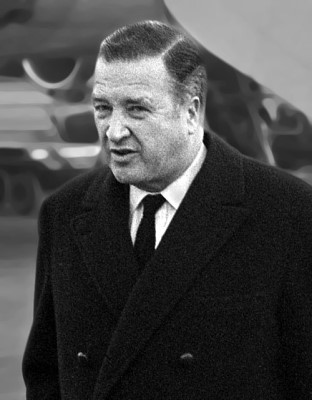
Although he is not as famous in history as his legendary grandfather, Henry Ford II is perhaps more responsible for the survival of the American automotive giant through the difficult 1950s when only the best survived.
But the situation was not easy at all and when Henry took over the company in 1945, Ford was in disarray. The company mainly concentrated on the already famous pre-war models that over time began to lose pace with more modern cars from General Motors and Chrysler.
With no time to waste, Henry gathered around him a group of ten so-called "Whiz Kids" who were at that time the chief engineers at colleges across America. Thanks to their fresh ideas, Ford introduced the first post-war model in 1949 which was significantly lower and longer than the competition and became an overnight hit.
Thanks to the great success of the aforementioned car, Ford had enough finances to invest in models that were supposed to raise the company's image.
This applies, first of all, to the 1955 Thunderbird, which became Ford's first modern sports two-seater, and the luxurious 1956 Continental Mark II, which was hand-assembled and at its time was one of the most expensive cars in the world.
Then came the famous 1957 Skyliner, the first American post-war car to have a metal roof that could be lowered into the trunk at the touch of a button, and for inspiration for the last model, Ford went to faraway Australia.
Ute Vehicles
The so-called "ute" class of vehicles proved extremely popular in Australia, where Ford controlled a majority of the market. Ford believed that it could transfer some of its success to the American market, where pickups had always been a solid seller. Ford’s F-Series is the best example of its popularity.
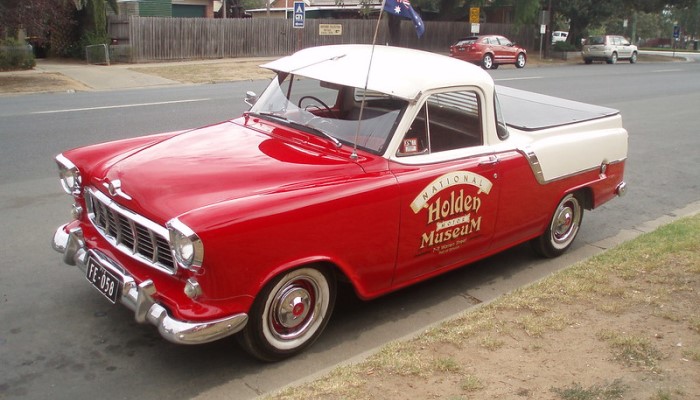
Photo of "ute" (Australia): Holden FE Utility" by sv1ambo
However, Henry estimated that not all customers wanted a traditional pickup truck with large dimensions and high fuel consumption, and he ordered his engineers to design a vehicle that a farmer could drive to the market on Saturdays and to church on Sundays.
The idea seemed simple enough on paper. Ford knew that farmers, who did not have the finances for a new pickup, would take pre-war station wagons, remove their roofs and build small pickups on their basis.
Ford also had the advantage of having 20 years of experience with a similar car in Australia, where the "ute" was produced as a coupe, roadster, and even a sedan. What distinguished the Australian "utes" from the new American model was that Australians mainly used their vehicles for work, while Ford wanted a greater dose of luxury and equipment.
The Hudson and Studebaker pickups of the 1930s were taken as inspiration and are known as some of the most beautiful pickups ever produced, but no significant steps were taken until 1955. That year, the great rival General Motors introduced a pair of new pickups, the Chevrolet Cameo Carrier and GMC Suburban, which had the beautiful design and equipment of the luxury Chevrolet Bel Air.
Although they did not sell in large numbers, the Cameo and Suburban attracted enough attention that Ford, whose F-Series pickup was mainly used as a work vehicle, began to consider a similar idea.
From Idea to Realization
An idea that Ford had considered a few years earlier was put into practice when it took the three-door station wagon line (Courier Sedan Delivery, Ranch Wagon and Del Rio) and cut off the roof to create the 1957 Ford Ranchero.
In a time when minivans did not exist, most families used station wagons, and Ford absolutely dominated with annual sales of about 150,000 units. The Ranchero was introduced in late 1956 as the 1957 model and was one of the largest production Fords produced up to that time.
Bigger, longer, wider, lower and more luxurious, the 1957 Ford became a huge hit with customers, thanks to which it sold more vehicles that year than its main rival Chevrolet - for the first time since 1931.
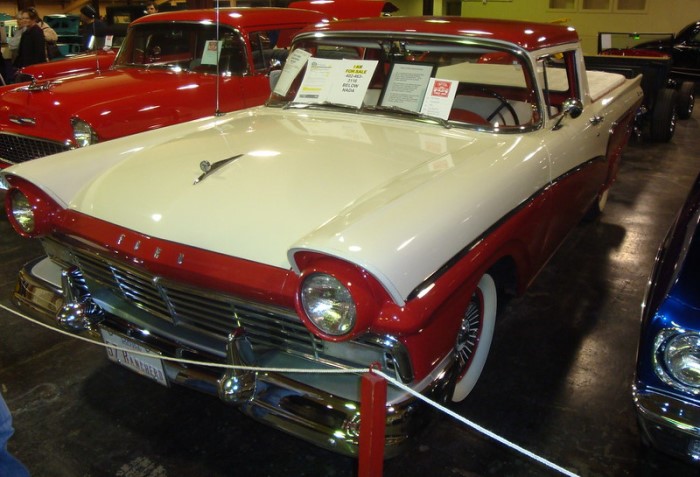
Photo: 1957 Ford Ranchero" by Ryan Frost
Compared to the 1956 model, the 1957 Ford shared only the engines, but even with them, the power was significantly increased. The Ranchero had a standard 223 cid (3.7L) six-cylinder engine, which produced 144 hp, but most buyers opted for one of the proven V8 engines – 272 cid (4.6L) and 190 hp or 292 cid (4.8L) and 212 hp.
The audience reactions were excellent. When it was introduced at the New York Auto Show in 1956, the Ranchero was something completely new that the American public had not had the opportunity to see until that moment.
Main rivals General Motors and Chrysler were left in awe, although Chevrolet was the first to offer a competitor in 1959 when the El Camino was introduced. The Ranchero was also well received by customers.
Starting Price and Sales Figures
The starting price was $2,098, but for just an extra $51, the buyer could get the more luxurious Del Rio model with more chrome and a more powerful V8 engine. What particularly delighted buyers was the interior, which could be obtained in the same style as the luxurious Fairlane.
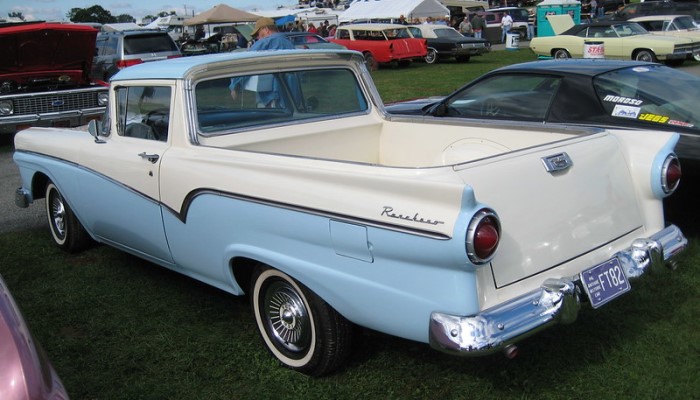
Photo: 1957 Ford Ranchero" by Hugo-90
Buyers also played a big role in the trailer. What adorned the Ranchero was that its trailer was larger and could carry a lot more cargo than most pickups, so it seemed like a great combination for all those who wanted a family car and a pickup in one, and in the first year 21,706 copies were sold.
For 1958, the Ranchero received its first design changes such as dual headlights in the style of the 1958 Thunderbird. That same year, the Ranchero also received a new 352 cid (5.8L) engine with 300 hp and the first three-speed automatic transmission.
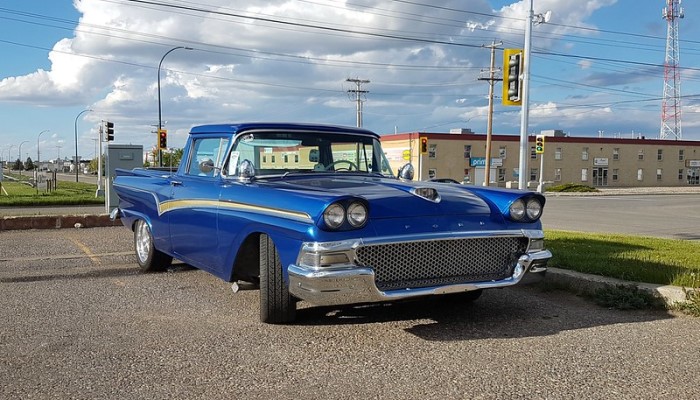
Photo: 1958 Ford Ranchero" by dave_7
Unfortunately, the entire Ford lineup did not perform well in 1958, with Chevrolet once again taking the lead in sales, with a total of 9,950 Ranchers sold.
The final year of the first generation was 1959, when the popular boxy design was introduced, and to this day, it is considered one of the most beautiful Fords ever produced. Sales jumped to 14,169 units thanks to the larger dimensions that followed in mid-1959 when the Galaxie debuted.
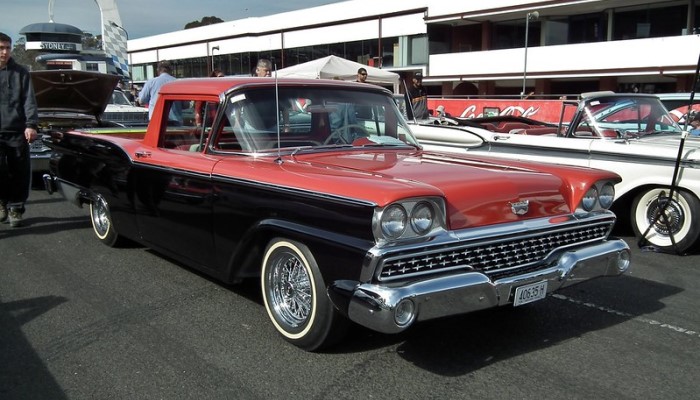
Photo: 1959 Ford Ranchero pick up" by sv1ambo
The 1957-1959 Ranchero is now considered the most popular generation of the model, but due to the high production numbers, it is not as popular as the 1959 Chevrolet El Camino, which is a much rarer car.
1957-1959 Ranchero in Today's Market
A stylish blend of car and truck, the Ranchero was the original "ute" – a utility vehicle with a surprisingly sophisticated swagger. And surprisingly, these retro beauties are still kicking around today, causing a stir in a market dominated by SUVs and crossovers.
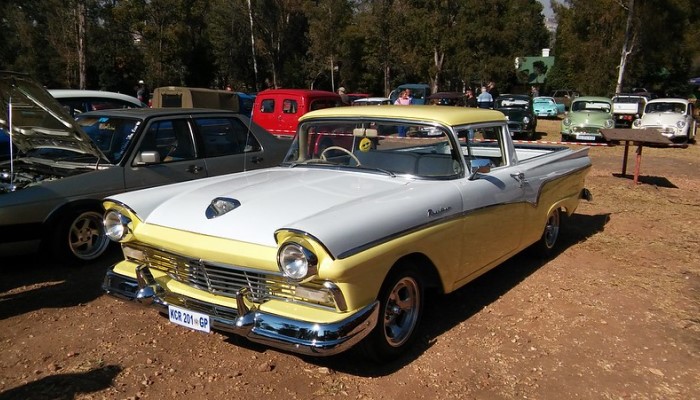
Photo: Ford 1957 Ranchero. vvc" by Basic Transporter
Why the enduring appeal? Well, let's just say they're like a really cool, slightly grumpy uncle who shows up at family reunions with a six-pack and a great story (and possibly a slightly rusty tailpipe).
They possess a blend of classic lines and practical utility that's hard to replicate. Think of it this way: you get the driving experience of a classic car with the added bonus of being able to haul a surprisingly large amount of… stuff. We’re talking enough space for a weekend’s worth of groceries, a vintage record player, and maybe even that questionable taxidermied squirrel you found in the attic.
The prices, as you can see, reflect the increasing rarity and desirability of these classic vehicles. It's a buyer's market... if you're a millionaire with a penchant for chrome and a love of elbow grease. Restoration can be a significant undertaking, requiring both mechanical expertise and a healthy dose of patience (and a bottomless supply of elbow grease).
But what makes them so expensive? Well, here's the deal:
- These aren't exactly rolling off the assembly line anymore.
- Classic car enthusiasts are clamoring for these beauties.
- Bringing one back to its former glory requires time, skill, and a substantial budget.
FAQs
Q: Are 1957-1959 Rancheros reliable? A: Well, expect regular maintenance and the possibility of unexpected adventures.
Q: Are they fuel-efficient? A: Absolutely not. Think of them as rolling gas guzzlers with a fantastic personality. You’ll be making frequent stops at the gas station.
Q: Can I use it for everyday driving? A: Technically, yes. Practically speaking… maybe. It depends on your tolerance for attention, turning heads, and the occasional minor mechanical hiccup.
Conclusion
Ultimately, owning a classic 1957-1959 Ranchero isn't about practicality; it's about making a statement. It's about embracing a piece of automotive history, and understanding that sometimes, a little rust and a lot of character are exactly what you need.

Unique Car Zone Team
A group of several fans of everything that moves on four wheels, a few article creators, a couple of marketing strategists, designers, web developers, and lots of coffee.




